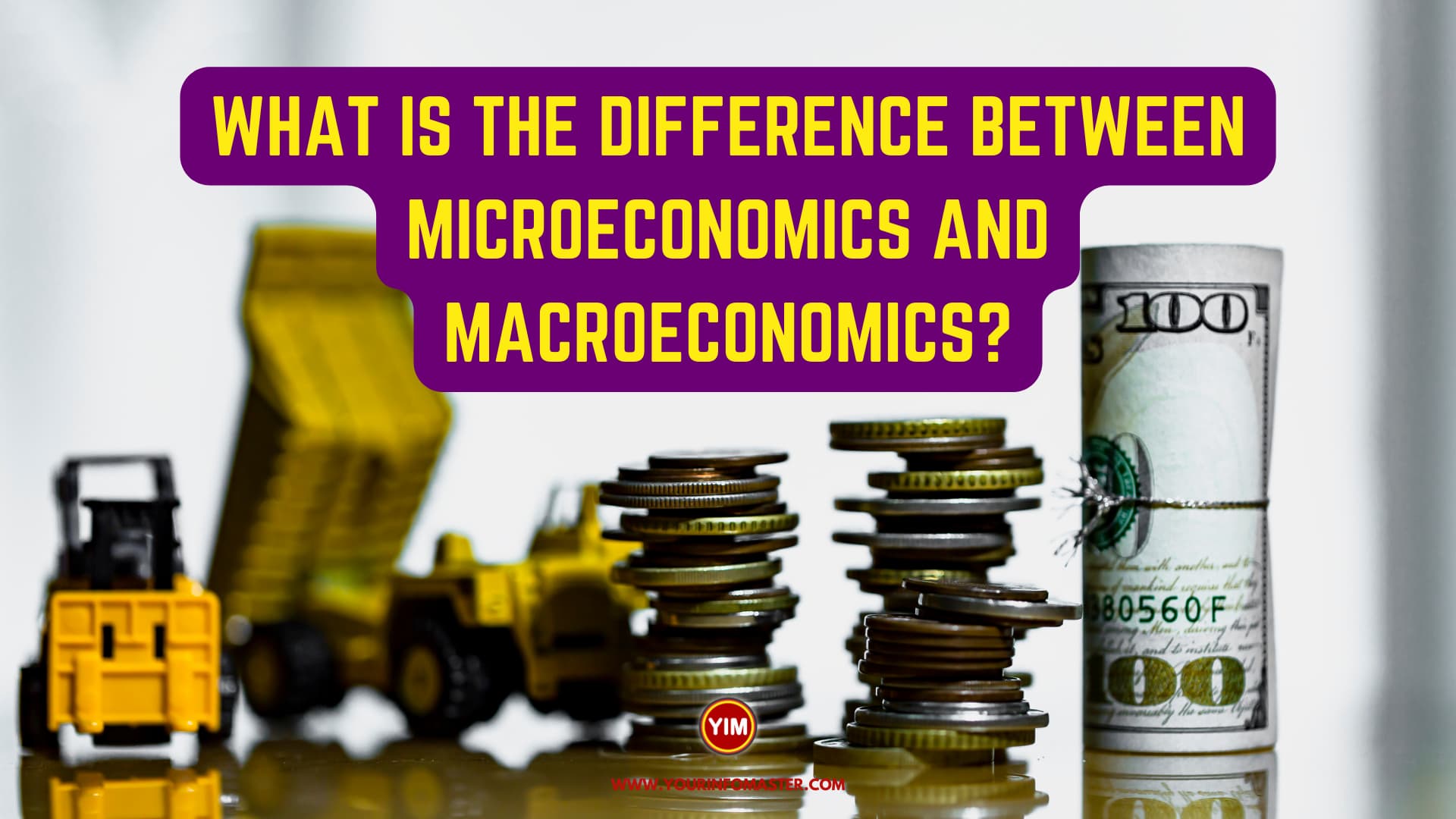I am going to explain the blog post “What is the difference between Microeconomics and Macroeconomics?“
In the realm of economics, two fundamental branches coexist, each providing unique perspectives on the functioning of the economy. Microeconomics and macroeconomics are distinct fields that analyze economic phenomena at different levels of aggregation.
Understanding the difference between microeconomics and macroeconomics is essential for grasping the broader dynamics of economic systems. In this blog post, we will delve into the disparities between these two branches of economics, exploring their scopes and methodologies.
Check also: What is the difference between Juneteenth and independence day?
5 Differences between Microeconomics and Macroeconomics
Here is a list of five key differences between microeconomics and macroeconomics. By comprehending these distinctions, individuals can develop a more comprehensive understanding of the economic landscape.
Here is a list of 5 differences between Microeconomics and Macroeconomics:
- Level of Analysis
- Scope of Focus
- Factors of Influence
- Policy Implications
- Data and Measurement Techniques
Check also: What is the difference between family medicine and internal medicine?
Detail of 5 Differences between Microeconomics and Macroeconomics
Here is the detail of 5 differences between Microeconomics and Macroeconomics:
Level of Analysis
- Microeconomics examines the behavior of individual agents, such as consumers, firms, and households, and their interactions in specific markets.
- Macroeconomics analyzes the economy as a whole, studying aggregate variables like national income, inflation, and unemployment rates.
Scope of Focus
- Microeconomics concentrates on the allocation of resources, price determination, and individual decision-making within specific markets.
- Macroeconomics investigates overall economic performance, including factors like economic growth, business cycles, and monetary and fiscal policies.
Factors of Influence
- Microeconomics considers supply and demand, production costs, consumer preferences, and market structures as key determinants of individual choices and market outcomes.
- Macroeconomics examines factors like aggregate demand and supply, government policies, international trade, and monetary factors that affect the overall performance of the economy.
Policy Implications
- Microeconomics provides insights into optimizing resource allocation and improving market efficiency through policies that influence individual market behavior.
- Macroeconomics guides policymakers in implementing measures to stabilize the overall economy, control inflation, reduce unemployment, and promote sustainable economic growth.
Data and Measurement Techniques
- Microeconomics relies on detailed data from specific markets and employs techniques such as demand and supply analysis, cost analysis, and optimization models.
- Macroeconomics utilizes aggregate economic data, such as Gross Domestic Product (GDP), national income accounts, and employment statistics, often employing statistical and econometric tools.
Check also: What does a rat mean in a dream?
Conclusion
In conclusion, microeconomics and macroeconomics offer distinct lenses through which to view and understand economic phenomena. Microeconomics focuses on individual market behavior and resource allocation, while macroeconomics examines the broader aspects of the economy.
The differences in their levels of analysis, scopes of focus, factors of influence, policy implications, and data usage highlight the complementary nature of these two branches of economics.
By recognizing their disparities and interdependencies, economists and policymakers can gain valuable insights into how markets and the overall economy function, enabling them to make informed decisions that drive sustainable economic growth and prosperity.
See also: What does it mean when you dream water?
If you really enjoyed the article “What is the difference between Microeconomics and Macroeconomics?,” then I would be very grateful if you’d help it spread by emailing it to your friends or sharing it on Twitter, Instagram, or Facebook. Thank you!
Have you read “What is the Difference between Microeconomics and Macroeconomics?“ Which of these blogs are you reading, and how is it similar to one of them?







